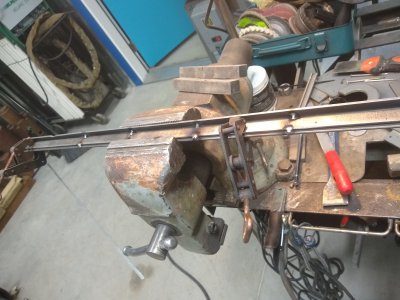This actually took a couple days, but I completed it today. At the end of last month I bought the die filer that Ray Bahr (
@rbahr) advertised on the forum. He was able to disassemble, pack and ship it to me in 3 boxes, the last of which I got on 8/3. Unfortunately, the repair on the base (which Ray had mentioned in his ad) did not survive the trip. Not that it was in any way Ray's fault. He did a great job packing the parts, even lining the boxes with plywood. The heavy box with the base was just handled too roughly in transit. When I told Ray about the mishap, he even offered a partial refund, to pay for the material for a new base. I thanked him, but told him I already had something on hand.
What I used for the new base was a largish chunk of 3/4" MIC-6 aluminum tooling plate I'd salvaged from a piece of equipment HP had discarded many years ago. The aluminum was easy to saw to size (LOVE my new table saw!) The die filer body casting is open on the bottom and depends on the base to seal it off. Because the tooling plate was holey I cut a chunk of 1/8" aluminum to go between the casting and the tooling plate.

I stuck felt pads Ito the bottom of the tooling plate, to provide a bit of vibration damping.

Next, I made a new motor mount bracket. The original was a bit stiff and did not allow enough wrench access for the mounting bolt heads. In addition, it held the motor in a fixed axial location, even though the motor pulley has two grooves (for 350 or 450 strokes/minute). The new motor mount allows the motor to slide axially and keep the belt straight in either position.

These shots show the "finished product" from the front, with the belt cover on and off.


The T-wrench is for tightening the file clamp.

The other wrench is needed for now because the clamp screws for the file backup roller and the work hold-down have plain nuts on them. The filer originally had knurled knobs in these two places, and I plan to make some in the next few days.
Thanks again, Ray!






















